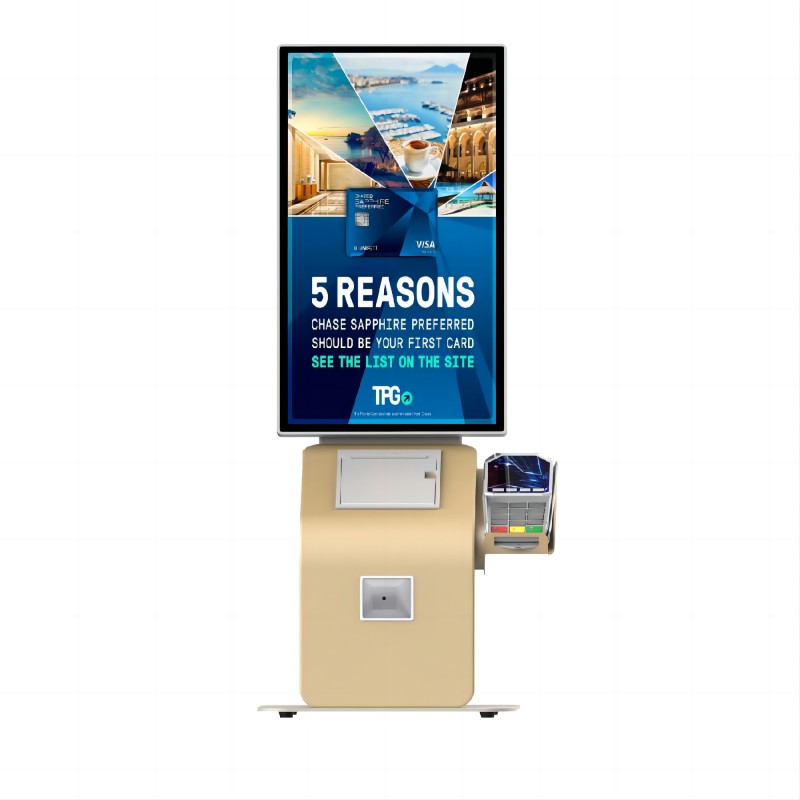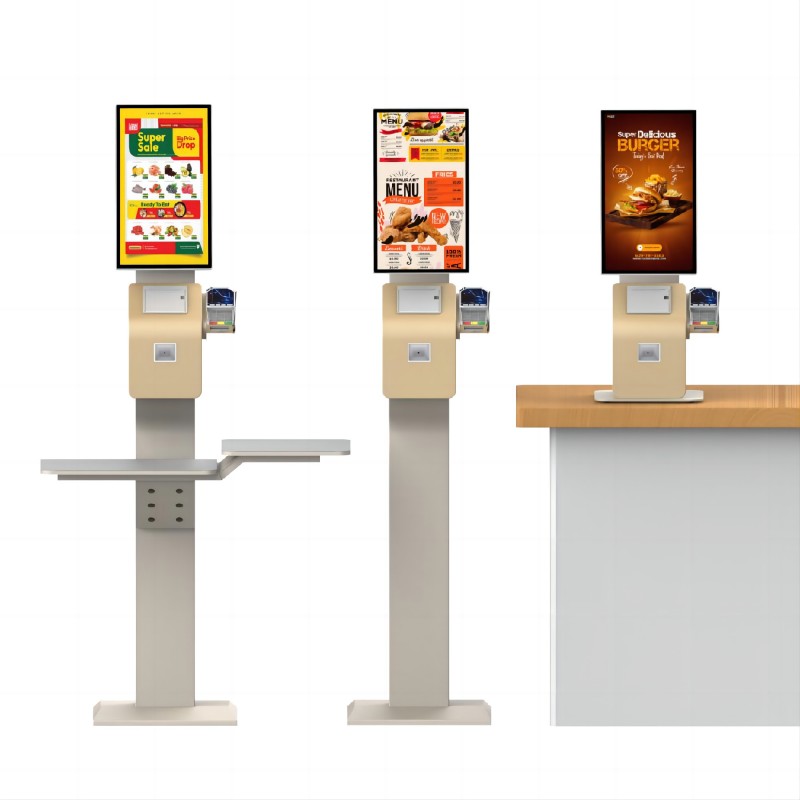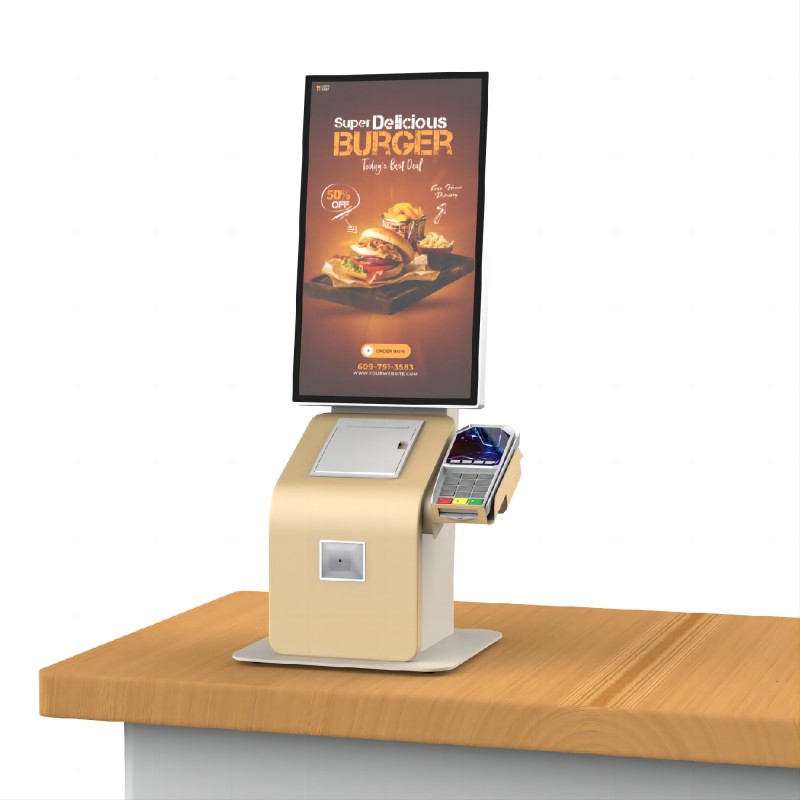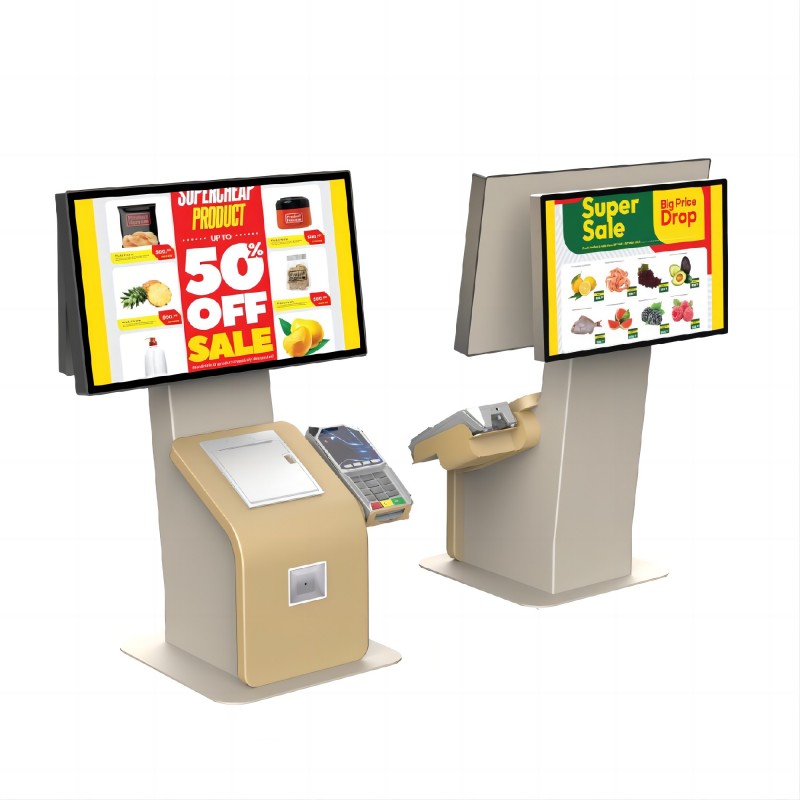
| Component | Description | Purpose | Example |
|---|---|---|---|
| Chassis/Enclosure | The outer structure housing all internal components. | Protects internal components and provides a branded appearance. | Custom metal or wooden enclosure. |
| Touchscreen Display | Interactive screen for customer engagement. | Allows users to interact with the kiosk via touch input. | Capacitive or resistive touchscreen. |
| Computer/Processor | The central processing unit running the kiosk software. | Controls all kiosk operations and manages data processing. | Embedded PC or tablet. |
| Payment Terminal | Device for processing card payments. | Enables customers to make secure payments directly at the kiosk. | Credit card reader, NFC reader. |
| Printer | Prints receipts, tickets, or other documents for customers. | Provides tangible proof of purchase or service. | Thermal receipt printer. |
| Barcode/QR Scanner | Scans barcodes or QR codes for various applications. | Allows users to scan items, tickets, or coupons. | Handheld or integrated barcode scanner. |
| Network Module | Wi-Fi, Ethernet, or cellular module for internet connectivity. | Ensures the kiosk remains connected to the network for updates. | Wi-Fi router, Ethernet port, SIM card slot. |
| Power Supply | The electrical system that powers the kiosk and all its components. | Ensures all components are powered efficiently. | Power adapter, UPS backup system. |
| Security Locks | Physical locks to secure access to internal components. | Prevents unauthorized access and tampering. | Key locks, electronic locks. |
| Cooling System | Fans or ventilation to maintain optimal internal temperature. | Prevents overheating of internal electronics. | Cooling fans, heat vents. |
Touchscreen Display: Provides an interactive interface for users to browse products, access information, and make selections.
Payment Terminal: Allows customers to process transactions securely, including credit/debit card payments and mobile payments.
Barcode Scanner: Enables quick scanning of product codes for price checks or inventory management.
Printer: Prints receipts, tickets, or vouchers for customers as needed.
Camera: Used for security, customer identification, or interactive features such as virtual try-ons.
Speaker and Microphone: Facilitates audio instructions or customer service interactions.
PC or Embedded Computer: Powers the kiosk's software and handles processing tasks.

User Interface (UI): Designed for easy navigation and interaction with the kiosk’s features.
Content Management System (CMS): Allows for the management and updating of information and advertisements displayed on the kiosk.
Payment Processing Software: Ensures secure transactions and integration with payment gateways.
Inventory Management Software: Tracks product availability and updates in real-time.
Customer Relationship Management (CRM) Software: Gathers customer data and preferences for personalized experiences and marketing.
Security Software: Protects against cyber threats and unauthorized access to sensitive data.

Enhanced Customer Experience: Provides a user-friendly interface for customers to access information, check product availability, and make purchases, improving their overall shopping experience.
Increased Sales Opportunities: Offers additional sales channels within the shopping center, helping retailers reach more customers and boost sales through impulse buying and easy access to promotions.
Efficient Transactions: Speeds up the checkout process with integrated payment terminals, reducing wait times and improving customer satisfaction.
Real-Time Inventory Updates: Helps manage and display up-to-date product information and availability, reducing the risk of stockouts and ensuring customers can find what they need.
Cost-Effective Operations: Reduces the need for additional staff to handle customer inquiries and transactions, lowering operational costs for retailers.
Data Collection and Analytics: Gathers valuable customer data and behavior insights, allowing retailers to tailor marketing strategies and improve product offerings.
24/7 Availability: Provides round-the-clock access to products and services, accommodating customers outside of regular store hours and enhancing convenience.

The price of a shopping center kiosk can vary widely based on its size, features, and customization options, typically ranging from $5,000 to $20,000. Basic models with minimal features are on the lower end, while high-tech kiosks with advanced functionalities such as touchscreens, integrated payment systems, and custom branding can be more expensive.
The ROI of investing in a shopping center kiosk is generally positive, driven by several factors. Kiosks streamline operations, reducing labor costs by automating transactions and customer service. They enhance the shopping experience, potentially increasing foot traffic and sales. Real-time inventory management and data collection enable targeted promotions and inventory optimization, further boosting revenue. Additionally, kiosks can operate 24/7, capturing sales outside regular hours. Overall, the investment pays off through increased sales, improved customer satisfaction, and operational efficiencies.

| Type | Description | Typical Size (L x W x H) | Use Case |
|---|---|---|---|
| Interactive Kiosk | Equipped with touchscreens for customer interaction. | 1.2m x 0.8m x 2.0m | Customer information, digital directories |
| Self-Service Kiosk | Allows customers to complete transactions independently. | 1.5m x 1.0m x 2.2m | Self-checkout, order placement |
| Payment Kiosk | Handles financial transactions, including payments and bill pay. | 1.2m x 0.8m x 1.9m | Bill payments, ticket purchases |
| Ticket Kiosk | Dispenses tickets or passes for events or transport. | 1.3m x 0.9m x 2.0m | Event tickets, transport passes |
| Information Kiosk | Provides information or digital maps to guide visitors. | 1.2m x 0.7m x 2.0m | Shopping center directories, promotional info |
| Digital Signage Kiosk | Displays dynamic advertisements or messages. | 1.5m x 1.0m x 2.2m | Advertising, promotional content |
Assess Needs: Determine the primary function of the kiosk—whether for interactive information, self-service transactions, payment, or signage.
Select Type and Features: Choose a type that fits your needs (interactive, self-service, etc.) and select features such as touchscreen size, payment processing capabilities, and hardware durability.
Consider Space: Ensure the kiosk size fits the available space in the shopping center without obstructing foot traffic.
Evaluate Customization: Look for kiosks that offer customization options to match your brand and operational needs.
Check Reliability: Invest in a kiosk from a reputable manufacturer known for reliability and support.
Budget Wisely: Balance your budget with the features you need. Remember that higher initial costs can lead to better ROI through increased efficiency and customer satisfaction.
Support and Service: Opt for a manufacturer that provides strong after-sales support and maintenance services to ensure long-term functionality.
What did our happy clients say?
Excellent experience with our new shopping center kiosk! The interactive features are a hit with our customers, and the support team was outstanding. Highly recommended!
The self-service kiosks have transformed our shopping center operations. Easy to use and reliable—great investment. Customer service was top-notch during the purchase process.
We are thrilled with our new shopping center kiosks. The customization options allowed us to tailor them perfectly to our needs. The quality and functionality are impressive!
The payment kiosks have greatly streamlined our checkout process. Efficient, user-friendly, and well-built. A fantastic addition to our shopping center, and excellent service from the manufacturer!